
Capri is an island located in the Tyrrhenian Sea off the Sorrento Peninsula, on the south side of the Gulf of Naples in the Campania region of Italy. The main town of Capri that is located on the island shares the name. It has been a resort since the time of the Roman Republic.

Positano is a village and comune on the Amalfi Coast, in Campania, Italy, mainly in an enclave in the hills leading down to the coast.

Italo-Western is, in some classifications, the largest branch of the Romance languages. It comprises two of the branches of Romance languages: Italo-Dalmatian and Western Romance. It excludes the Sardinian language and Eastern Romance.
Yat-Sen Chang Oliva is a Cuban former principal dancer.

Alessandra Ferri OMRI is an Italian prima ballerina. She danced with the Royal Ballet (1980–1984), American Ballet Theatre (1985–2007) and La Scala Theatre Ballet (1992–2007) and as an international guest artist, before temporally retiring on 10 August 2007, aged 44, then returning in 2013. She was eventually granted the rank of prima ballerina assoluta.

The Brissago Islands are a group of two islands located in the Swiss part of Lake Maggiore close to Ronco sopra Ascona and Brissago. Both islands belong to the district of Locarno, in the canton of Ticino.
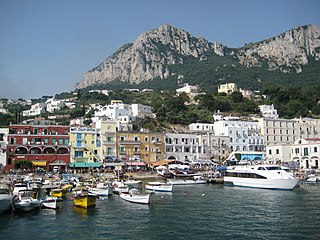
Capri is a municipality in the Metropolitan City of Naples situated on the island of Capri in Italy. It comprises the centre and east of the island, while the west belongs to Anacapri.

The Sirenusas, also known as the Gallos, are an archipelago of little islands off the Amalfi Coast of Italy between Isle of Capri and 6 km (4 mi) southwest of Province of Salerno's Positano, to which it is administratively attached. They are part of the Campanian Archipelago. The name, Sirenuse, is a reference to the mythological sirens said to have lived there.

Rogliano is a commune in the French department of Haute-Corse, Corsica.
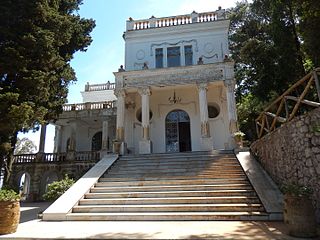
Villa Lysis is a villa on Capri built by industrialist and poet Jacques d'Adelswärd-Fersen in 1905. "Dedicated to the youth of love", it was Fersen's self-chosen exile from France after a sex scandal involving Parisian schoolboys and nude tableaux vivants.

Dorothée Gilbert is a principal dancer with the Paris Opera Ballet.

Patrick Dupond was a French ballet dancer and artistic director.

Villa Rufolo is a villa within the historic center of Ravello, a town in the province of Salerno, southern Italy, which overlooks the front of the cathedral square. The initial layout dates from the 13th century, with extensive remodeling in the 19th century.
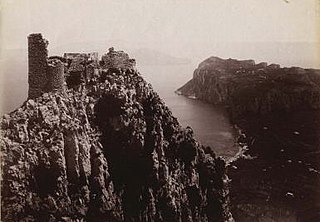
Castello Barbarossa is an archaeological ruin and ornithological station in Anacapri, on the island of Capri, Italy. It is named after the former corsair and Ottoman Kapudan Pasha (Admiral) Hayreddin Barbarossa, who stormed it in 1535 and destroyed it in 1544. The construction date is uncertain but it perhaps dates back to the late ninth century. From 1898, the structure, now in ruins, was owned by the Swedish psychiatrist Axel Munthe who donated it to his foundation. The surroundings, interesting for their botanical features, are home to the island's ornithological station.

Ana Laguna is a Spanish-Swedish ballet dancer, court dancer and professor. She has danced throughout the world with such legends as Rudolf Nureyev and Mikhail Baryshnikov earning prizes for her performances from France, Italy, Monaco, Russia, Spain, Sweden and the United States.
Carlo Di Lanno is an Italian ballet dancer. He is a former Principal Dancer with the San Francisco Ballet and Dresden Semperoper Ballett. He trained and graduated at Accademia Teatro alla Scala, and danced with Teatro alla Scala and Staatsballett Berlin.
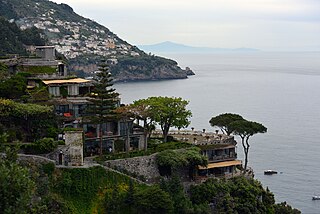
The San Pietro di Positano is a 5-star luxury hotel, located near the town of Positano on the Amalfi Coast of Italy.

Petra Conti is an Italian prima ballerina. She is a former principal dancer with Los Angeles Ballet, the Boston Ballet and La Scala Theatre Ballet.

The Path of 100 Towers is a multi-day trekking route that begins and ends in Cagliari (Sardinia). The path is named after the 105 historical coastal towers along the route.
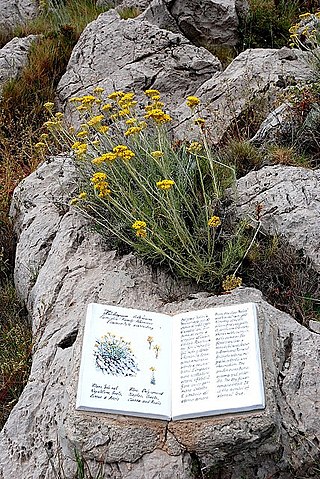
The forts of Capri, also called coastal forts of Anacapri or Bourbon forts, are located in the town of Anacapri, Campania.





















